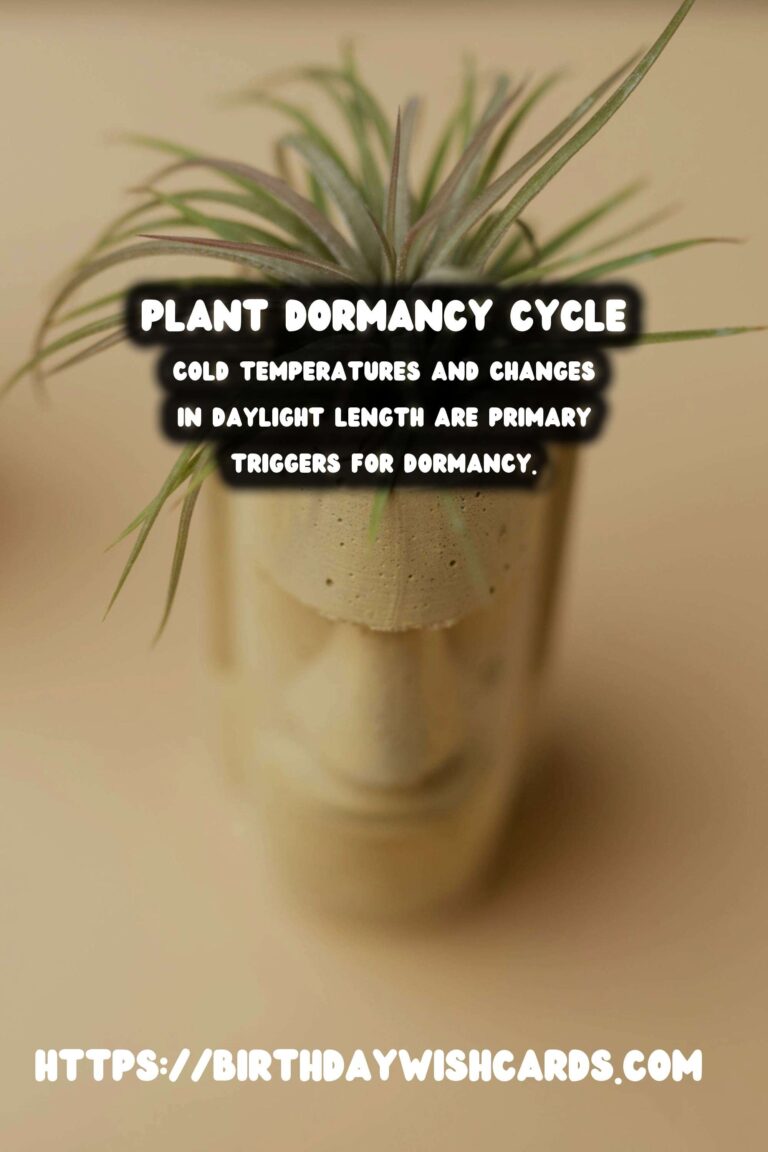
Plant dormancy is a fascinating and essential survival strategy that many plants adopt to withstand adverse conditions, particularly in temperate climates. This natural adaptation allows plants to conserve energy and resources during unfavorable periods, such as the cold winter months, and resume growth when conditions improve.
What is Plant Dormancy?
Plant dormancy is a state of temporary metabolic inactivity or minimal activity. It is characterized by the suspension of growth and development processes. Dormancy can occur in seeds, buds, and tubers, allowing plants to survive predictable seasonal changes in the environment.
The Dormancy Cycle
The dormancy cycle in temperate climates typically follows a seasonal pattern, correlating with changes in temperature and daylight. This cycle includes the following stages:
1. Induction of Dormancy
As daylight decreases and temperatures drop in autumn, plants begin to prepare for dormancy. During this period, they undergo physiological changes, such as the accumulation of carbohydrates and other nutrients, which will be used as energy reserves during the dormant phase.
2. Maintenance of Dormancy
Throughout the winter months, plants remain in a dormant state. This phase is crucial as it helps protect plant tissues from freeze damage. During dormancy, metabolic activities are significantly reduced, and growth ceases.
3. Breaking Dormancy
With the arrival of spring, increasing temperatures and longer daylight hours trigger the breaking of dormancy. Plants resume active growth, utilizing stored nutrients to develop new leaves, flowers, and roots.
Factors Influencing Dormancy
Several factors influence plant dormancy, including:
- Temperature: Cold temperatures are a primary trigger for dormancy in temperate plants. Some species require a specific duration of cold exposure to enter and break dormancy.
- Photoperiod: Changes in daylight length signal plants to enter or exit dormancy. Shortening days in autumn and lengthening days in spring are critical cues.
- Water Availability: Reduced moisture levels can induce dormancy, especially in regions with dry winters.
Benefits of Dormancy
Dormancy offers several benefits, including:
- Survival: Dormancy allows plants to survive harsh climatic conditions by conserving resources and energy.
- Regrowth: By entering dormancy, plants can effectively time their growth cycles to coincide with favorable environmental conditions, optimizing their chances of successful reproduction and growth.
Examples of Dormant Plants in Temperate Climates
Many plants in temperate climates exhibit dormancy. Some examples include:
- Deciduous Trees: Trees such as maples and oaks shed their leaves and enter a dormant state during winter.
- Perennials: Plants like hostas and peonies die back to their root systems and regrow in the spring.
- Bulbs: Tulips and daffodils remain dormant as bulbs underground until springtime.
Caring for Dormant Plants
Proper care during dormancy is crucial for plant health. Here are some tips:
- Protect Roots: Mulching can help insulate roots and maintain soil moisture.
- Pruning: Pruning dead or damaged branches can prevent disease and promote healthy growth.
- Monitoring: Keep an eye on weather conditions and ensure that dormant plants are protected from extreme cold or unexpected warm spells.
Understanding plant dormancy is key to successful gardening in temperate climates. By recognizing and respecting this natural cycle, gardeners can support their plants’ health and ensure vibrant growth come spring.
Plant dormancy is a survival strategy that allows plants to withstand adverse conditions. Dormancy is characterized by metabolic inactivity and the suspension of growth. The dormancy cycle in temperate climates correlates with seasonal changes in temperature and daylight. Cold temperatures and changes in daylight length are primary triggers for dormancy. Dormancy offers benefits such as survival during harsh conditions and optimized growth cycles.
#PlantDormancy #Gardening #TemperateClimates #Botany #PlantCare

